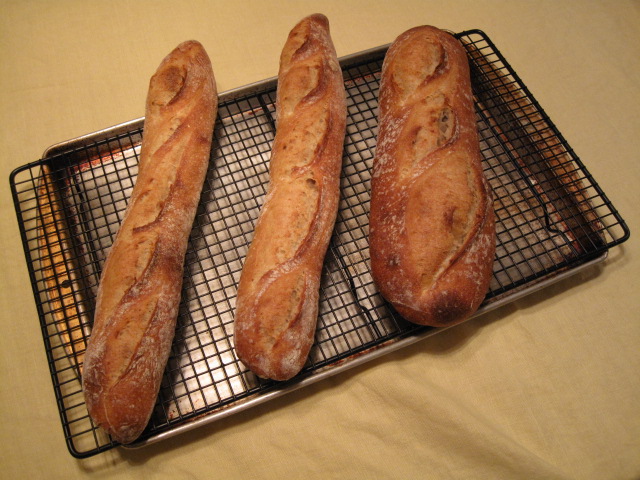This weekend's breads
This weekend, I baked a couple sourdough baguettes and a bâtard using the mixing and fermentation methods described in the posts about Anis Bouabsa's baguettes. For these breads, I used 90% AP four, 5% WW and 5% rye. Interestingly enough, the flavor of the bâtard seemed much better to me.


- Log in or register to post comments
- 17 comments
- View post
- dmsnyder's Blog


 [/url]
[/url] [/url]
[/url] [/url]
[/url] [/url]
[/url]